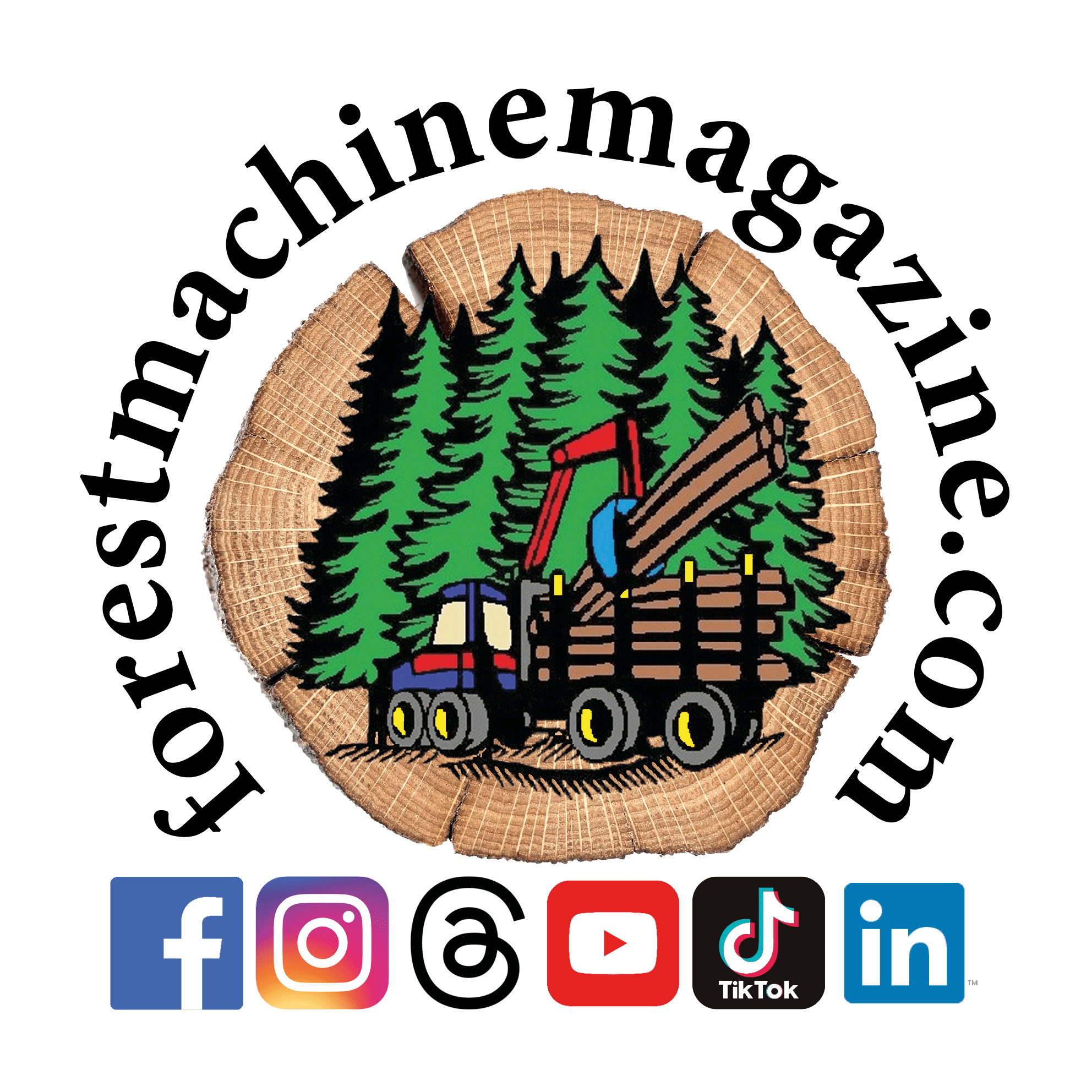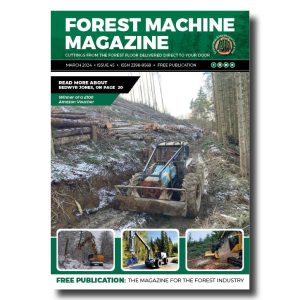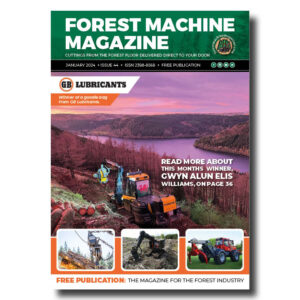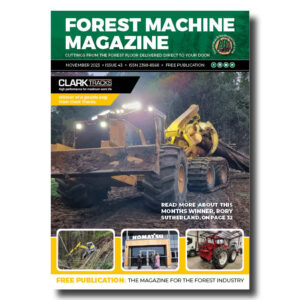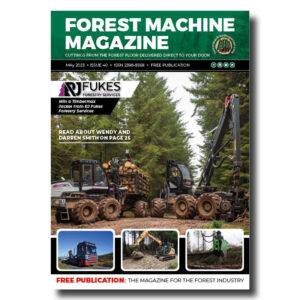Project Outreach has successfully tested a new feller-forwarder machine with a 20-meter reach in the forest in Baden-Württemberg. The project consortium, consisting of Hohenloher Spezialmaschinen GmbH (Neu-Kupfer), the German Center for Forest Work and Technology (KWF, Groß-Umstadt), and the Institutes for Human-Machine Interaction (MMI) and Structural Lightweight Design (SLA) at RWTH Aachen University, is now evaluating the data collected during operation for the final report.
Project Outreach-In the Altdorfer Wald forest district near Ravensburg, public corporated ForstBW kindly provided the project with training and test areas where the machine was tested and preliminary performance data subsequently collected using a time study. The Outreach machine is intended to replace the motor-manual feller in the central block, which is inaccessible to standard wheeled harvesters when skid row spacing is extended to 40 meters. The aim is to replace accident-prone manual work and make fully mechanized timber harvesting possible even with skid rows spacing of 40 m.

-
That’s a remarkable amount of work hours for a single machine, the Norcar 600 owned by Erkki Rinne is taken well care of, it even has the original Diesel engine.
-
Kieran Anders is a forestry contractor working in the lake district. His work involves hand cutting and extracting timber using a skidder and tractor-trailer forwarder.
-
It is not possible to eliminate chain shot, but there are simple steps that can be taken to reduce the risk.
-
Arwel takes great pride in the fact that the mill has no waste whatsoever, “the peelings are used for children’s playgrounds, gardens and for farm animals in barns in the winter and the sawdust has multiple uses in gardens and farms as well.
-
Timber hauliers need to encourage young blood in, and also look after the hauliers we have, we need make the sector a safe and positive place to work.
FIND US ON
An HSM 405 H4 with adjustable rims serves as the carrier vehicle. The attached lightweight boom weighs over 4 t, while the head, converted into a felling unit – the feed rollers and their mechanism have been removed – weighs approximately 850 kg. A lighter felling head is under development. The total system weighs about 40 t. Despite the rims adjusted to 3.4 m, the system occasionally reached its stability limits when fully extended at a right angle and pulling a tree. These limits can be extended by using bog tracks or inflating the tires with water.
Strain gauges were attached to the boom to monitor its structural integrity during testing. A specially developed assistance system helps the operator keep track of the felling head’s position, even at extended reach, using multiple camera systems and a special computer with real-time image processing. A stereo camera on the felling head captures and displays data like the diameter of the trees in view and their distance from the crane tip, while another camera provides a view into the canopy above the head.
Operator Charly Müllerschön, who trains new customers on HSM harvesters and also helped oversee the project during the development phase, as an exercise first felled several dozen spruce and beech trees with a diameter at breast height (DBH) of up to 45 cm. After the felling cut, the trees are pulled from the stump with the help of a winch mounted at the crane base and attached to the rotator, coordinated with the boom, and pulled within reach of a standard harvester, which then handles delimbing and processing. The only failure encountered during the successful tests was a bent saw blade that needed replacing.
Strain gauges were attached to the boom to monitor its structural integrity during testing. A specially developed assistance system helps the operator keep track of the felling head’s position, even at extended reach, using multiple camera systems and a special computer with real-time image processing. A stereo camera on the felling head captures and displays data like the diameter of the trees in view and their distance from the crane tip, while another camera provides a view into the canopy above the head.
Operator Charly Müllerschön, who trains new customers on HSM harvesters and also helped oversee the project during the development phase, as an exercise first felled several dozen spruce and beech trees with a diameter at breast height (DBH) of up to 45 cm. After the felling cut, the trees are pulled from the stump with the help of a winch mounted at the crane base and attached to the rotator, coordinated with the boom, and pulled within reach of a standard harvester, which then handles delimbing and processing. The only failure encountered during the successful tests was a bent saw blade that needed replacing.
On another test plot, the machine felled and delivered approximately 100 cubic meters of spruce and deciduous trees, with performance data and damage to the remaining stand as well as the soil being recorded. According to an initial evaluation, no significant damage to the soil or stand was caused. Performance data for the entire work system will be evaluated during the remaining project period until December 31, 2025, and will be included in the final report, which is due at the end of March 2026. The project is funded by the Federal Ministry of Agriculture, Food and Regional Identity (BMLEH) through the Agency for Renewable Resources (FNR) (funding reference KWF: 2220NR309D).
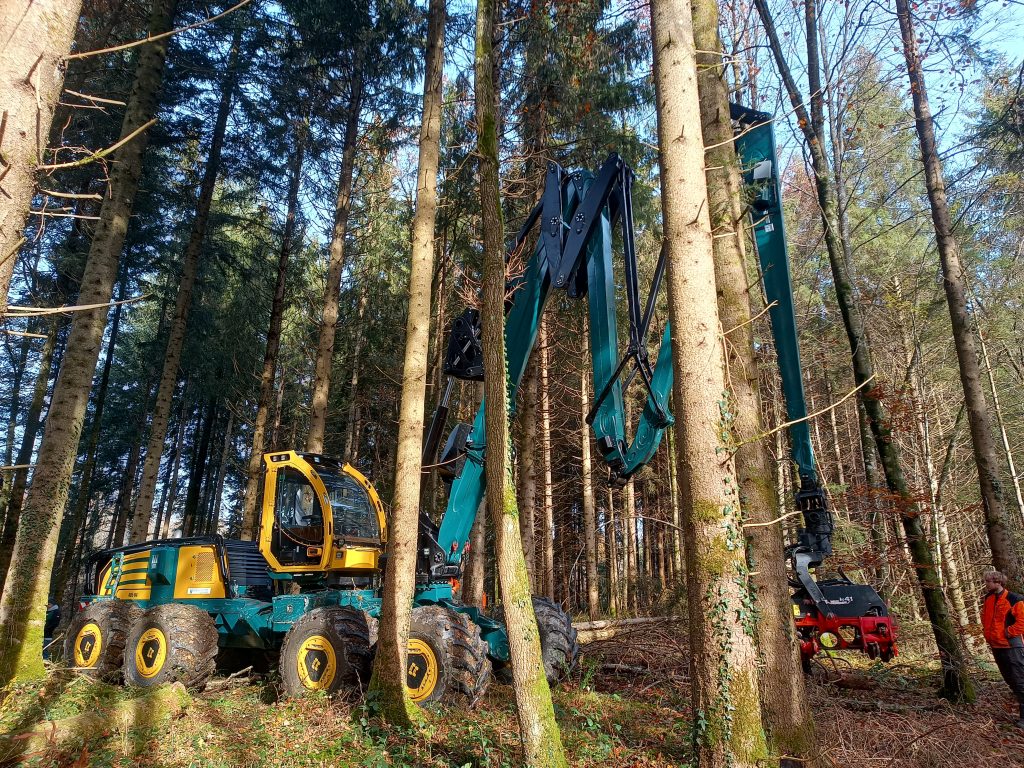

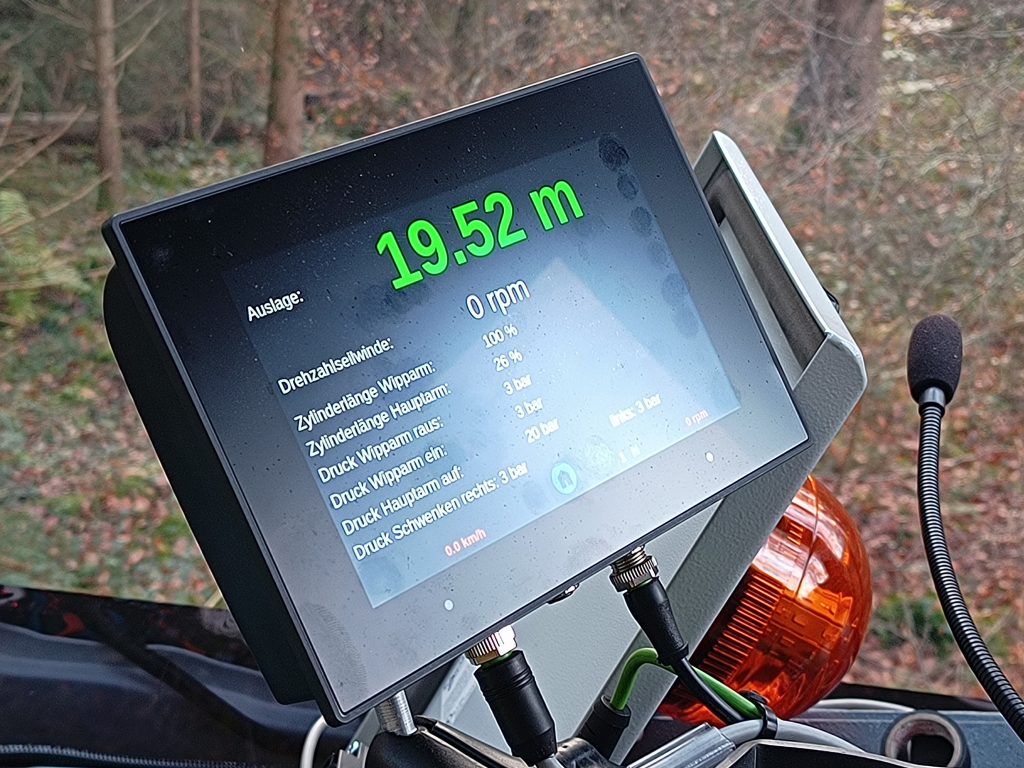

All photos are the property of the KWF
The German Center for Forest Work and Technology (KWF) is the center of expertise for forestry technology and work processes in Germany. The KWF is an institution co-financed by the federal government and the German states, and is responsible for all federal states and types of forest ownership. Including its predecessor institutions, the KWF has over 100 years of experience in practical consulting and applied research. Its work focuses on evaluating forestry technology and work processes from the perspectives of occupational safety, ergonomics, ecology, and economics, in order to achieve optimal conditions for people working in the forest and to preserve and develop our forests. Furthermore, the KWF is the testing institution for forestry technology in Germany. Another key area of its work is the collection, processing, and dissemination of data through professionally qualified and target-group-oriented communication.
Sign up for our free monthly newsletter here
Contact forestmachinemagazine@mail.com to get your products and services seen on the world’s largest professional forestry online news network.
#homeoflogging #writtenbyloggersforloggers #loggingallovertheworld
Written by loggers for loggers and dedicated solely to the equipment used in forestry operations.
